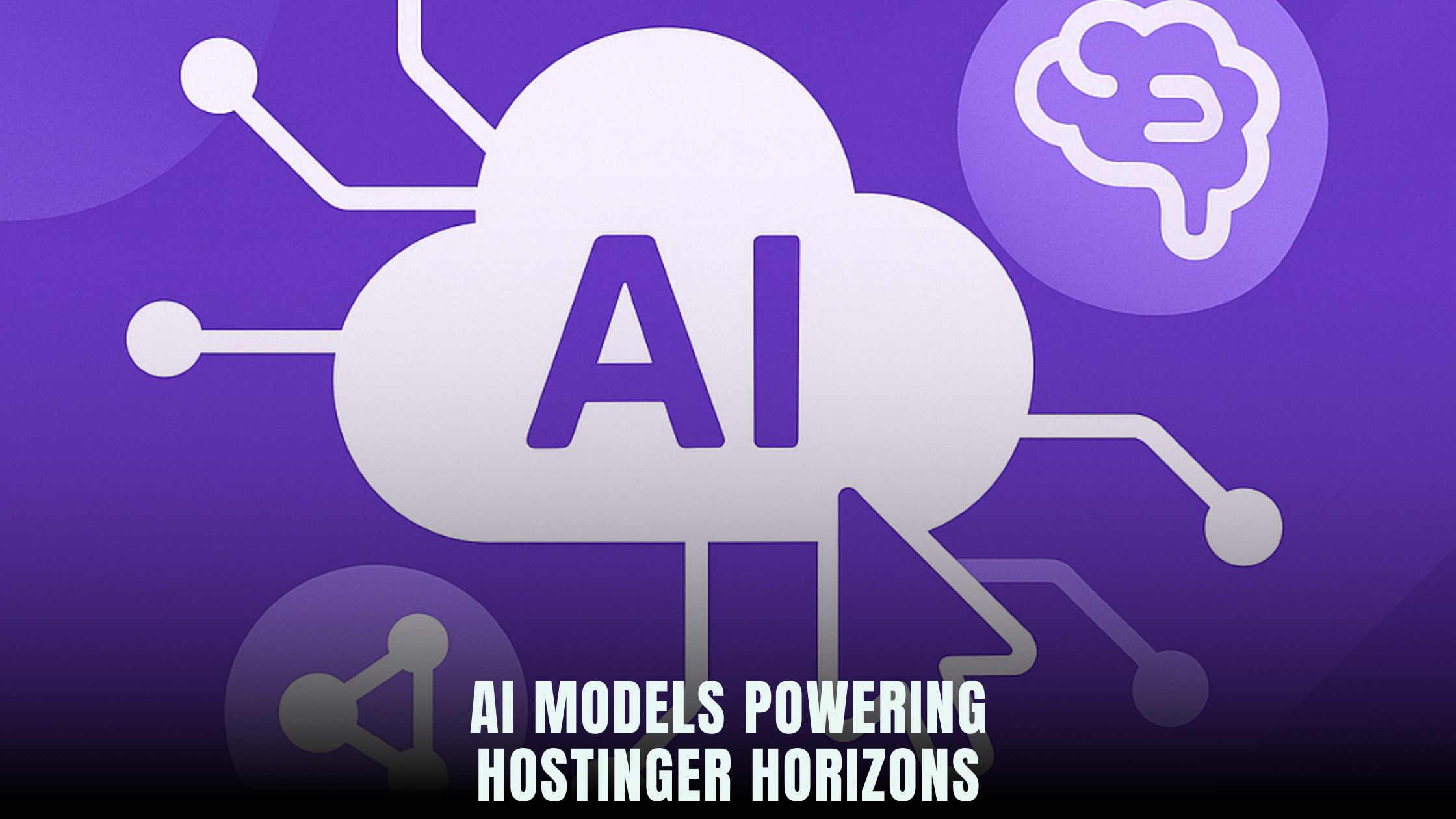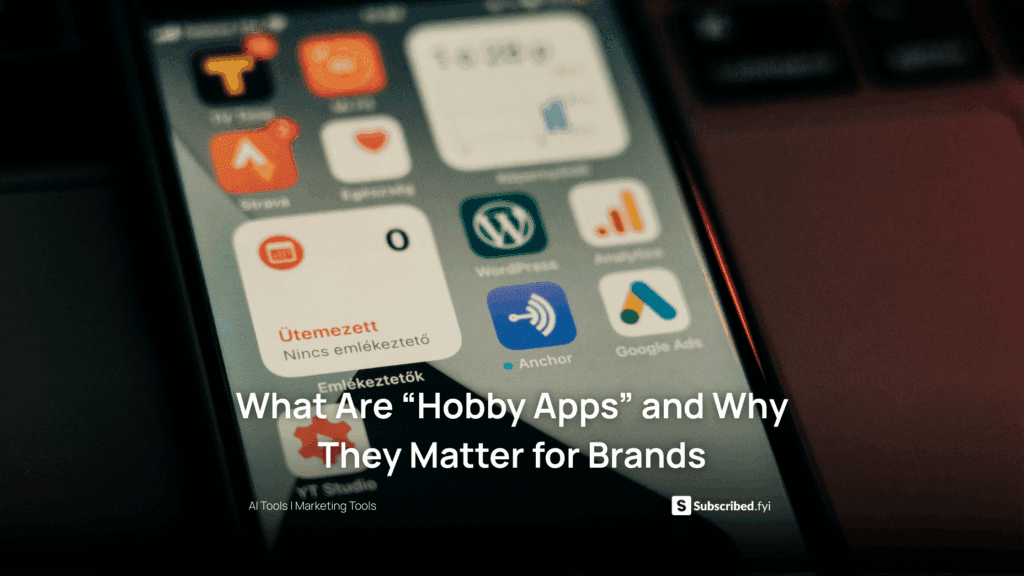What AI Models Power Hostinger Horizons?
- WebOps Platforms Bug Tracking & Feedback Software Web Development & Design Website Builder


Building a website by simply describing your vision sounds like magic, but it’s achievable thanks to advanced AI models working behind the scenes. Platforms such as Hostinger Horizons turn natural language into fully functional web apps by employing state‑of‑the‑art large language models (LLMs) for code generation, design arrangement, and content creation. If you’re curious about how other solutions handle AI-driven site building, the AI-Powered Website Builders List offers a comprehensive overview of tools blending no-code interfaces with powerful AI engines.
Diving deeper into the technology, you’ll find that multiple AI models collaborate to interpret your prompts, generate high‑quality code, and craft aesthetic layouts. From the model that deciphers your intent to the one that stitches together HTML and CSS, each component plays a vital role in delivering a seamless, intuitive experience. This article unpacks the key AI architectures powering Hostinger Horizons, compares them with alternative builders, and explains how they work together to bring your ideas to life in minutes.
Understanding Large Language Models and Their Role in No-Code
Large language models (LLMs) such as GPT‑4 and Codex form the backbone of AI-driven no-code platforms. These models are pre-trained on vast datasets comprising web pages, code repositories, and design patterns. They learn to predict the next word or code token given a prior context, which enables them to generate human‑readable prose and syntactically correct code.
Hostinger Horizons uses a fine-tuned variant of these LLMs to translate conversational prompts into site components. When you type “create a landing page with a header, three feature cards, and a call‑to‑action button,” the model identifies relevant code snippets and design templates from its training and composes them into a cohesive structure. This approach accelerates development by up to 90%, slashing project launch times from months to minutes.
Natural Language Understanding for Prompt Interpretation
At the heart of any chat-driven builder is its ability to understand user intent. Natural Language Understanding (NLU) models, often built on transformer architectures, parse your sentences to extract entities, actions, and attributes. For instance, words like “header,” “feature cards,” and “button” are recognized as UI components, while adjectives like “responsive” or “minimalist” inform styling choices.
Hostinger Horizons’ chat UI leverages a customized NLU pipeline to accurately tag and classify each piece of your prompt. By doing so, it determines which LLM to invoke for code generation versus content creation. This division of labor ensures that the final output matches both the functional requirements and the desired aesthetic.
Code Generation Engines Behind the Scenes
Once intent is mapped, code generation engines come into play. Models like OpenAI’s Codex—trained specifically on code from GitHub—excel at producing clean, efficient code snippets in multiple programming languages. In the context of Horizons, a variant of Codex generates HTML, Tailwind CSS classes, and JavaScript for interactive elements.
These code models don’t work in isolation. A meta-model oversees the assembly of snippets into full pages, ensuring consistency in naming conventions, component hierarchies, and accessibility attributes. When you prompt “add a newsletter signup form with email validation,” the system stitches together form elements, validation scripts, and styles into a ready‑to‑deploy module.
AI-Powered Design and Layout Models
Design coherence is as important as functional correctness. AI-driven layout models, often based on graph neural networks or vision‑language transformers, learn from millions of design examples to place components aesthetically. They decide grid structures, spacing, typography scales, and color schemes that align with modern web standards.
Hostinger Horizons integrates such a design model to automatically adapt your site’s look and feel. A prompt like “match branding with blue accent and rounded buttons” triggers the design engine to select color palettes, set border radii, and adjust contrast ratios—all while maintaining responsive behavior across devices.
Multimodal Models for Image and Sketch Conversion
Beyond text, Hostinger Horizons supports image and sketch inputs. Multimodal AI models, such as CLIP or BLIP for understanding images, combined with diffusion models for generation, translate visual concepts into usable assets. Upload a hand‑drawn wireframe and prompt “convert to responsive layout,” and the platform infers component boundaries to generate a working prototype.
Horizons also allows you to describe an image concept—“create a hero image of a team collaborating”—and uses image-generation models to produce custom graphics. These assets integrate directly into your pages, eliminating the need for external design tools.
Real-Time Sandbox and Model Integration
A powerful sandbox environment is essential for testing AI-generated outputs before going live. Hostinger Horizons’ real‑time sandbox leverages container orchestration to spin up instant previews. Each chat prompt triggers model executions—NLU, code generation, design adaptation—and the results render immediately in a secure URL.
This tight integration between AI models and the sandbox accelerates feedback loops. If a generated layout doesn’t meet your expectations, you can refine prompts—“reduce header height and increase card padding”—and see updates in seconds. This iterative cycle, powered by continuous model inference, frees you from manual staging and deployment processes.
Performance, Security, and Scalability of AI Models
Running AI models in production demands robust infrastructure. Hostinger Horizons employs distributed GPU clusters and elastic scaling to handle variable loads. Models are containerized with optimized runtimes and use quantization techniques to reduce latency without compromising quality.
Security measures include input sanitization to prevent injection attacks, secure key management for API integrations, and strict access controls in the sandbox environment. With built‑in SSL, DDoS protection, and automated backups, Horizons ensures that even if a model misfires, your data and uptime remain protected.
Future Trends in AI-Driven Site Building
The next frontier in AI site building will see tighter integration of user analytics, personalized content generation, and advanced collaboration features. Expect AI agents to observe user behavior and suggest continuous optimizations—“add an FAQ section for high‑bounce pages”—or to draft A/B test variants automatically.
Hostinger Horizons is poised to adopt these trends, aiming to introduce community‑built plugin ecosystems and real‑time co-editing powered by generative models. By expanding its AI model suite, Horizons will offer deeper customization, predictive design tweaks, and ever‑faster turnaround times.
Harnessing AI Expertise with Hostinger Horizons
AI models are the engines that power the no-code revolution, converting natural language into high‑quality code and design with remarkable speed. Hostinger Horizons combines cutting‑edge LLMs, NLU pipelines, design transformers, and multimodal networks within a unified chat interface and sandbox environment. This synergy reduces development costs by up to 90%, slashes launch times from months to minutes, and democratizes web app creation for founders and solopreneurs.
By bringing these models together—fine‑tuned for code, trained on design patterns, and optimized for real‑time performance—Hostinger Horizons offers an AI-driven platform where technical complexity fades away. You focus on your vision; the AI models handle the rest.





